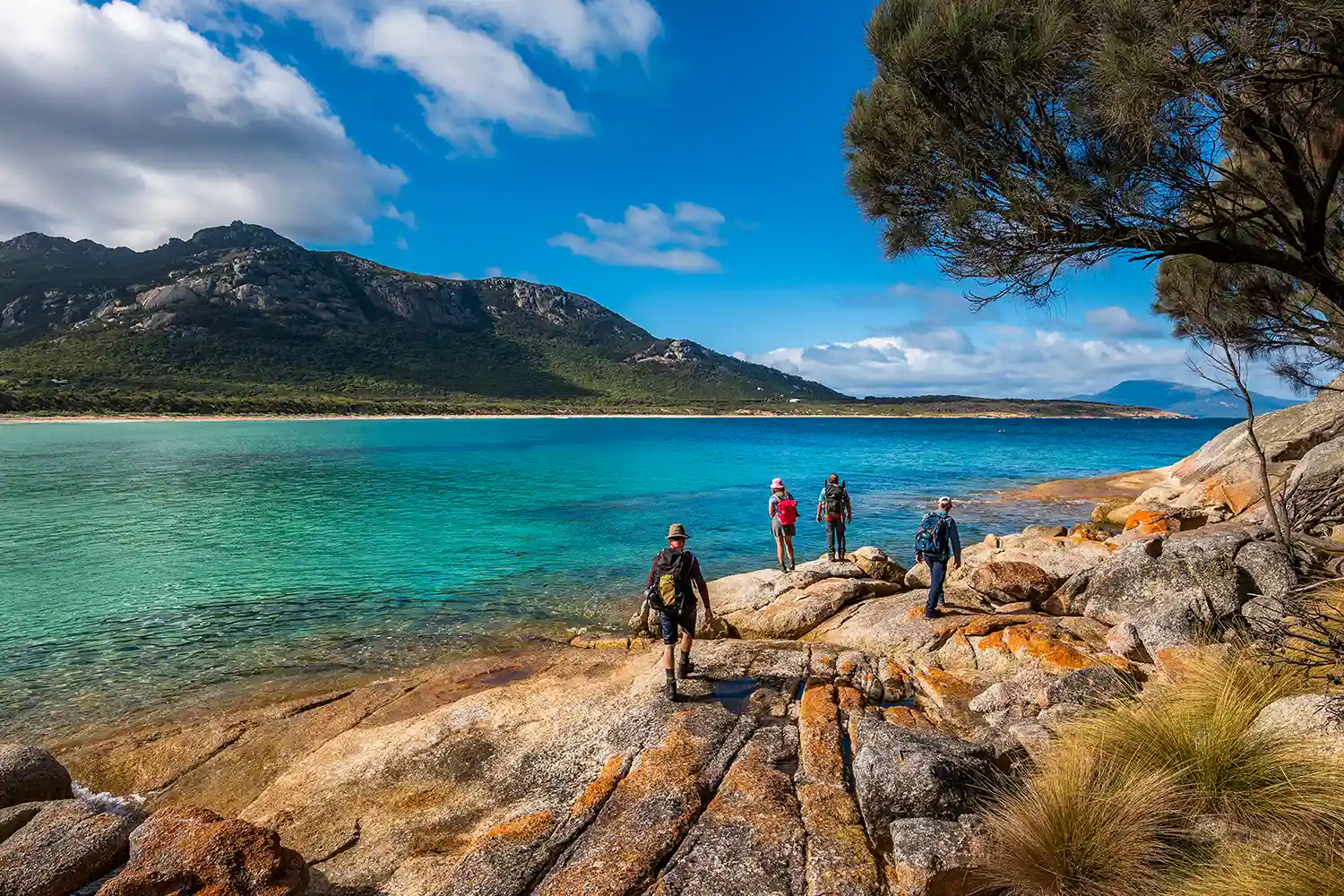Wonders never cease, at least on Tasmania. Green and rugged, gentle and exotic - Australia's smallest state scores with the diversity of a continent. Located south of Melbourne, the island still surprises with real wilderness, great nature experiences and top regional products. To ensure that it remains a refuge for connoisseurs, plants and animals, more than a third is protected as a national park or is a UNESCO World Heritage Site. The following seven natural wonders should be on every Tasmania bucket list.
1 A world apart: Tasmania's cool rainforest
Those who equate rainforests only with heat and humidity in the tropics are mistaken. Tasmania's temperate rainforest is a unique and diverse ecosystem - the most biodiverse in its climate zone. The combination of altitude and rainfall provides ideal living conditions for flora and fauna. Highlights include giant eucalypts, considered the tallest deciduous trees in the world. Other ancient tree species, which are also only found in South Australia, complement the flora, for example the Huon Pine and the Celery-top Pine. But the rainforest is also important for our survival, because it is a huge carbon store and binds more climate-damaging gases than other forests on earth.
Tip: For those who want to experience a lot in a short time, the Trowutta Arch Walk in the Tarkine region is worthwhile. Only one kilometer long, the walk surprises nature lovers with its diversity. No wonder it is one of Tasmania's 60 Great Short Walks.
2 More than devils in paradise: Tasmania's wildlife
Vast wilderness and large national parks - Tasmania is an Eldorado for animals. No wonder that numerous endangered species can be found in the Australian state. Among the best-known island inhabitants are the Tasmanian devil and the platypus. Many animal species even live exclusively there, such as the spotted marten, the Tasmanian pademelon and the brush-kangaroo. Characteristic of Tasmania and Australia is also the wallaby, where many do not immediately know whether it is a kangaroo or not. In fact, it is a small species of kangaroo that grows to a maximum of 80 centimeters. Tasmania travelers should not miss the rare white wallabies that are native to Bruny Island. With their snow-white fur and red eyes, the albinos are one of nature's wonders. Thanks to their cuteness factor and lack of natural enemies, they have been able to establish themselves well there.
Tip: To observe the white wallabies, the Adventure Bay in the northeast of Bruny Island is especially recommended. The marsupials are particularly active during dusk.
3 Up high: Between stone and sea
"Imagine a match - enlarge it hundreds of times until it is 70 meters high and four meters thick. Place it alone in the sea," is how first climber John Ewbank described Totem Pole at Cape Hauy. For sports enthusiasts, the thinnest tower standing freely in the sea in the southern hemisphere is a climbing El Dorado, for all other vacationers an impressive photo motif. Geologically it is a miracle that the rock needle is still standing. By the way: Totem Pole consists of dolerite, a dark gray to brown basalt variety that is harder than granite and makes up two thirds of Tasmania's rocks. The striking dolerite tower is also surrounded by a variety of other rock formations.
Tip: The tour to Cape Hauy is one of the most beautiful and spectacular multi-day hikes in Tasmania. However, vacationers can also experience the overwhelming view as a day hike.
4 A wave of waves: Surfing the Unsurfable
At the southern tip of the Tasman Peninsula, literally at the end of the world, is one of the most extraordinary surf spots. The so-called Shipstern Bluff wave rises up to ten meters into the air. Insiders also call it Devils Point. Not without reason. Because: Due to enormously strong, constantly changing inner formations, each wave has a unique appearance that makes it impossible to estimate. A wave of waves. Only experienced big-wave surfers should therefore paddle into the line-up; everyone else will be breathless from the shore. And how are the giant waves created? They are triggered by low-pressure areas coming from the South Pole and heading north - past the coast of Tasmania.
Tip: If you want to watch the wave from land, explore the Cape Raoul Track. The hike leads through untamed nature and offers no great difficulties - except for the length. There and back you should plan five to six hours.
5 Recharge your batteries: An island with fresh air guarantee
Take a deep breath. Pause. Exhale fully. In Tasmania, breathing becomes something very special. It has been proven that the island has the cleanest air in the world. And it feels fresh, without a doubt. Scientists have been measuring this for more than 40 years at the Cape Grim Baseline Air Pollution Station, but even laypeople can recognize the clean air with the naked eye. Light and colors seem more intense and there is no smog. The main cause is believed to be the westerly winds of the Roaring Forties, the air currents between the 40th and 50th parallels. They blow over 15,000 kilometers across the sea before they hit land in Tasmania.
Tip: Besides asthmatics and fitness fans, photographers also benefit from the clean air. The fewer particles there are in the air, the clearer the images will be. Ideal conditions, therefore, for travel photos and social media accompaniment.
6 Mysterious Lights: The Aurora Australis
A hundred times more stars than in the northern hemisphere, meteor showers, dust tails and nebulae - thanks to the clean air, the Tasmanian night sky allows for unique light spectacles. The world's best view of the Milky Way is just one of many attractions. An impressive experience are the southern lights, the Aurora Australis, which illuminate the night sky in green, blue, violet and red tones. Like a glistening, colorful band of light, they stretch across the horizon and are reflected on the surface of the sea. This phenomenon is best observed from May to September, but the chances of seeing the southern auroras are also good in the remaining months.
Tip: If you want to photograph the light spectacle with a little luck, climb Mount Wellington, not far from Hobart. But also Bruny Island and Satellite Island offer great views.
7 Exquisite and exclusive: Experience nature with pleasure
Whether in the rainforest or on the beach, anyone who explores the landscape will get hungry at some point. With its temperate climate, clean air and clean water, Tasmania has all the ingredients for world-class produce. These include tasty seafood such as oysters, scallops and langoustines, as well as dairy products and award-winning wines. Of particular note is Tasmanian Leatherwood honey, known for its spicy, powerful aroma and antibacterial, healing properties. It is obtained from the nectar of the white blossoms of the Leatherwood tree, which blooms for only six to eight weeks a year. A true rarity, the Leatherwood tree, the Tasmanian false elm, grows only in the rainforests of Tasmania.




